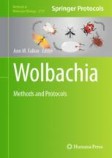Search
Search Results
-
Multitarget Fluorescence In Situ Hybridization Diagnostic Applications in Tumors
Multitarget fluorescence in situ hybridization (mFISH) is a technique that allows the detection of multiple target sequences on the same sample using...
-
In Situ Hybridization of Brain Slices
In situ hybridization (ISH) is an important technique for identifying gene expression at the cellular level in various organs, including brain...
-
Profiling Gene Expression in African Turquoise Killifish Nothobranchius furzeri Embryos with RNA Fluorescence In Situ Hybridization Chain Reaction (HCR)
Gene expression profiles reveal the dynamic behavior of gene products and provide key information to correlate genetic regulation and phenotypical...
-
Activity-Dependent Labeling of Olfactory Sensory Neurons Using RNA Fluorescence In Situ Hybridization Followed by Phospho-S6 Immunofluorescence
This microscope-based method allows demonstrating that an odorant receptor responded to an odorant in vivo. In sections of olfactory epithelium from...
-
Investigating residual leukemic cells in acute lymphoblastic leukemia: a practical approach using a streamlined interphase fluorescence in situ hybridization method on cerebrospinal fluid
IntroductionA precise diagnosis of central nervous system involvement in acute lymphoblastic leukemia (ALL) requires comprehensive knowledge of...

-
Preoperative fluorescence in situ hybridization analysis as a predictor of tumor recurrence in patients with non-muscle invasive bladder cancer: a bi-institutional study
BackgroundNon-muscle invasive bladder cancer (NMIBC) is known for its elevated recurrence rate, necessitating an enhancement in the current risk...

-
Real-Time Quantitative PCR and Fluorescence In Situ Hybridization for Subcellular Localization of miRNAs in Neurons
Neuronal miRNAs play major roles in regulation of synaptic development and plasticity. The small size of miRNAs and, in some cases, their low level...
-
Rapid Visualization of Gene Expression Using Chromogenic RNA In Situ Hybridization in African Killifish
Understanding the spatiotemporal pattern of genes involved in a specific biological process is critical for uncovering their organization,...
-
Technical comparison of Abbott’s UroVysion® and Biocare’s CytoFISH urine fluorescence in situ hybridization (FISH) assays
BackgroundThis study aims to compare the technical performance of Abbott’s UroVysion and Biocare’s CytoFISH urine cytology probe panel and position...

-
Whole-Mount Multicolor Fluorescent Labeling by In Situ Hybridization in Astyanax mexicanus Embryos and Larvae
Gene expression analyses by molecular histology are a crucial step in understanding gene function in any model organism. In the teleost Astyanax...
-
Multiplex In Situ Hybridization of the Primate and Rodent DRG and Spinal Cord
Fluorescence in situ hybridization (FISH) has become an important tool in laboratory experimentation by providing a qualitative or semi-quantitative...
-
Detection of apoptotic cells based on in situ hybridization chain reaction using specific hairpins
There are an increasing number of experiments to study programmed cell death/apoptosis, one of the characteristics of which is DNA fragmentation. The...

-
Fluorescence In Situ Hybridization in Urine Samples (UroVysion Kit)
Cystoscopy is considered the standard approach to the diagnostic workup of urinary symptoms. It has high sensitivity and specificity for papillary...
-
Current State of In Situ Gene Expression Studies in Animal Tissues
AbstractMorphological studies of farm animals are most often conducted using simple preparation and staining techniques. The study of the processes...

-
Optimization and evaluation of fluorescence in situ hybridization chain reaction in cleared fresh-frozen brain tissues
Transcript labeling in intact tissues using in situ hybridization chain reaction has potential to provide vital spatiotemporal information for...

-
Molecular Approaches to Diagnosis in Ewing Sarcoma: Fluorescence In Situ Hybridization (FISH)
The differential diagnosis of small round cell tumors (SRCT) crucially relies on the synoptic evaluation of morphology, immunohistochemical patterns,...
-
Visualization of Defined Gene Sequences in Single Nuclei by DNA In Situ Hybridization (DISH)
Gains and/or losses of large genomic loci such as full or partial aneuploidies/aneusomies can be routinely identified in single cells using...
-
Spatial expression pattern of serine proteases in the blood fluke Schistosoma mansoni determined by fluorescence RNA in situ hybridization
BackgroundThe blood flukes of genus Schistosoma are the causative agent of schistosomiasis, a parasitic disease that infects more than 200 million...

-
A Light in the Dark: Uncovering Wolbachia-Host Interactions Using Fluorescence Imaging
The success of microbial endosymbionts, which reside naturally within a eukaryotic “host” organism, requires effective microbial interaction with,...
-
The intracellular visualization of exogenous DNA in fluorescence microscopy
In the development of non-viral gene delivery vectors, it is essential to reliably localize and quantify transfected DNA inside the cell. To track...

